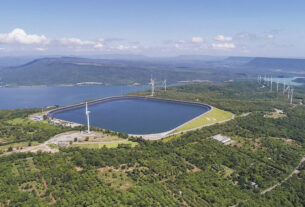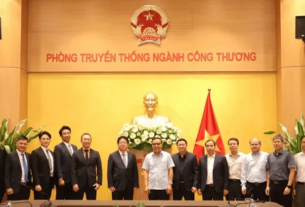Currently, First Solar has a production plant in Ohio and also has production lines in Germany, Malaysia and France.
First Solar Inc. has put the construction of its solar panel factory in Vietnam on hold indefinitely as part of changes in corporate strategy by its new interim chief executive to focus more on looking for new strong markets rather than just increasing production.
The Arizona-based thin film solar panel maker just broke ground on the $300 million Vietnam factory in March this year and had planned to begin commercial production near Ho Chi Minh City in the second half of next year.
The 250 MW manufacturing plant was part of a larger plan to more than double the company’s overall production capacity by 2012. The company will still be spending capital at the Vietnam plant to finish construction in the fourth quarter of this year, said Mark R. Widmar, chief financial officer for First Solar during the third-quarter earnings conference call.
First Solar said it still plans to continue developing a previously announced factory in Mesa, Arizona, to supply modules to the company’s 2.7 gigawatts worth of solar projects pending in the United States. The company is planning to start production at the 250 megawatt plant in the third quarter of 2012.
The project pipeline includes the Agua Caliente, Desert Sunlight, Antelope Valley Solar Ranch and Topaz projects, all of which use First Solar’s cadmium-telluride thin film solar panels.
Growth is not just expansion
First Solar actually released its third quarter financials last October 27, a day after the unexpected exit of Robert Gillette, its chief executive for two years, to be replaced by Mr. Mike Ahearn, its chief executive officer for nearly 10 years, on an interim basis
Mr. Ahearn, which is also First Solar’s founder, said Mr. Gillette left because he was no longer a good fit for the company and not because of any shortcoming.
“I know there’s been a lot of speculation about whether it was some type of fraud or legal action, or government investigation or major operational problem behind the move, and I can tell you none of these things were part of the board deliberations. This was simply a question of fit,” he said in a statement.
Mr. Gillette planned to build many factories under his term, which helped him succeed in doubling the company’s production capacity from 1,228 MW at the end of 2009 to 2,236 MW by the end of this year.
He planned to build the Vietnam facility and the Arizona factory. The company already has a plant in Ohio and also has production lines in Germany, Malaysia and France. Mr. Gillette’s goal was to reach 2.7 GW by next year according to a second-quarter company overview.
Mr. Ahearn said that one of factors that have slowed the company’s progress is “confusing factory expansion with growth.” Growth, he explains, starts from identifying where its products are needed and not just having the capability to produce them.
“Building more factories absent this demand creation doesn’t lead to growth.” Mr. Ahern said in a statement.
“It prevents us from focusing on the right things to do. Our emphasis needs right now to be on creating new markets,” he added.
Now at the helm, Mr. Ahearn said he is planning to tweak the company’s strategy by reducing capital spending next year and expand sales efforts in “markets worldwide that do not depend on today’s subsidy programs.”
He believes that the company’s sluggish growth was due to continued investment in maturing markets when it should focus more on creating new ones. Although Europe remains the largest solar market, policy changes over feed-in tariff in Italy, Germany and France have dampened demand.
“The normal operating rhythm and comfort level of the organization has caused us to continue to allocate most of our resources to the legacy markets fed by a declining subsidy pool,” he said in a statement.
He said that the United States should grow faster because many states require their utilities to sell renewable energy and incentives for consumers to put solar rooftops. India and the Middle East has also been cited to be potential key markets for solar, including Thailand, Indonesia, Malaysia and the Philippines.


